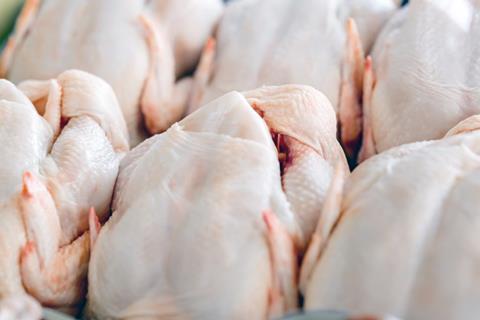Some of the UK's major retailers have published their January to March 2018 campylobacter results for fresh shop-bought UK-produced chickens, following tests run by the Food Standards Agency (FSA).
Campylobacter is the most common cause of bacterial food poisoning. It is naturally occurring and is found in many animals, most notably chickens.
Nine retailers across the UK have now published the latest testing results on campylobacter contamination in UK-produced fresh whole chickens.

The latest figures show that on average, across the major retailers, 3.8% of chickens tested positive for the highest level of contamination; these are the chickens carrying more than 1,000 colony forming units per gram (cfu/g) of campylobacter.
The corresponding figure for the previous set of results (October-December 2017) was 3.6%, while for the first publication (July-September 2017) it was 4.6%.
The Food Standards Agency (FSA) has been testing chickens for campylobacter since February 2014 and publishing the results as part of a campaign to bring together the whole food chain.
Michael Wight, director of policy and science at FSA, said: “The latest figures are consistent with previous results and show we are consolidating on the significant progress made so far.
“We will continue to actively work with retailers and smaller poultry businesses to further reduce campylobacter levels.
“We would like to thank the major retailers and poultry producers for their efforts in tackling campylobacter and for working alongside the FSA to coordinate the publication of results.”
How have supermarkets performed?
Morrison’s is coming out on top at present, with none of its chickens having the higher levels of contamination compared to the FSA retail target of 7%.
Sainsbury’s has also hit below the FSA target with just below 6%.
Tesco come in below the target with 5%, and has said it will introduce its own industry target that at least 95% of chickens supplied to the store will have minimal levels of campylobacter (less than 1,000 cfu/g).
Lidl has also fallen way below the target, with only 2%, and Aldi is on track with 5.3%.
Meanwhile, Marks and Spencer also reported campylobacter results that come in at 5%.
Asda however has fallen above the 7% target – with 7.9% for the latest results.
To view the results in full, click here.
This story was originally published on a previous version of the Meat Management website and so there may be some missing images and formatting issues.















